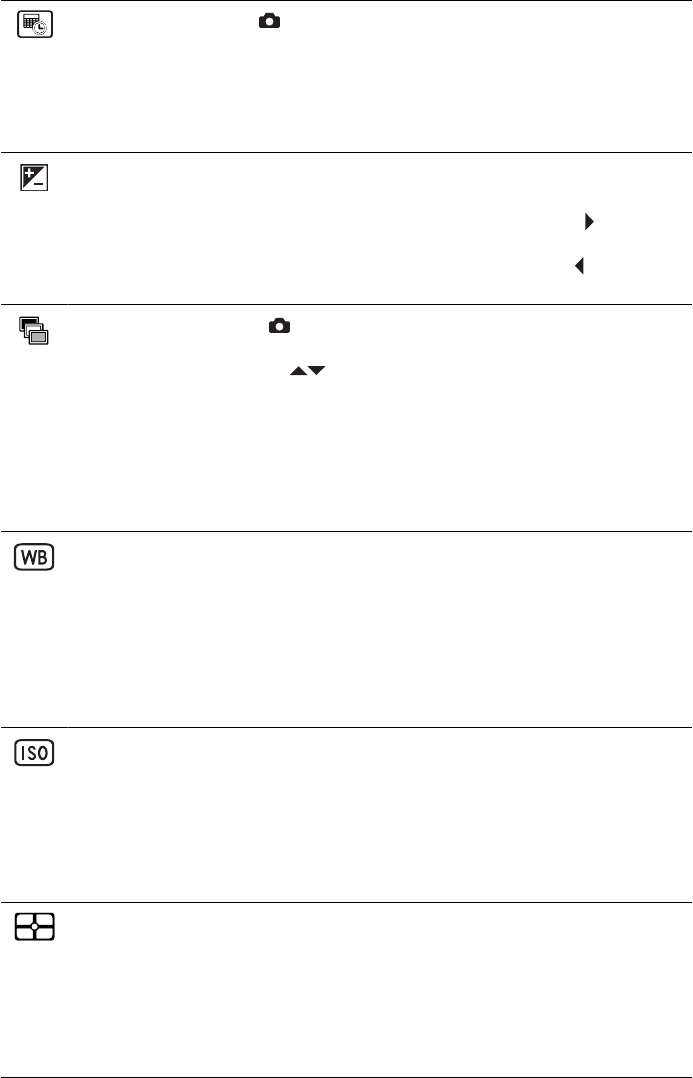
Date & Time Imprint ( only)—Imprints date in lower left corner of image.
The setting remains in effect until it is changed, even when you turn off the
camera.
● Off (Default)—No date or time imprinted on the image.
● Date Only—Date permanently imprinted.
● Date & Time—Date and time permanently imprinted.
Exposure Compensation—Overrides the camera’s automatic exposure
setting. For more information, see Exposure Compensation on page 22.
● To make the images you are about to capture brighter, press
to increase
the value.
● To make the images you are about to capture darker, press
to decrease
the value.
Exposure Bracketing ( only)—Creates a set of three images captured at
the value set for Exposure Compensation and under- and over-exposed by
the value you select using
.
● Off (Default)
● ± 0.5
● ±1.0
During Instant Review (see Instant Review on page 12), you can delete the
entire bracketing sequence. To delete individual images, see Deleting images
on page 25.
White Balance—Balances color based on lighting conditions. For more
information, see White Balance on page 22.
● Auto (Default)—Corrects for scene illuminance. For general picture
taking.
● Sun—For outdoor scenes in sunny or cloudy conditions.
● Shade—For outdoor scenes in shade or at dusk.
● Tungsten—For indoor scenes with incandescent or halogen lighting.
● Fluorescent—For indoor scenes with fluorescent lighting.
ISO Speed—Adjusts the camera’s sensitivity to light. For more information,
see ISO speed on page 22.
● Auto (Default)—Camera selects the best ISO speed for the scene.
● ISO 100—For best quality.
● ISO 200—For lower light conditions.
● ISO 400—For lower light conditions and/or action when short shutter
speeds are desired.
AE Metering—Specifies which region of a scene the camera uses to calculate
the exposure.
● Average (Default)—Useful when you want the entire scene to be used
when calculating exposure.
● Spot—Useful in backlit scenes or when the subject is very dark or light
compared to the rest of the scene. For best results, use Focus Lock (see
Using Focus Lock on page 13) with Spot.
Chapter 3
(continued)
20


















